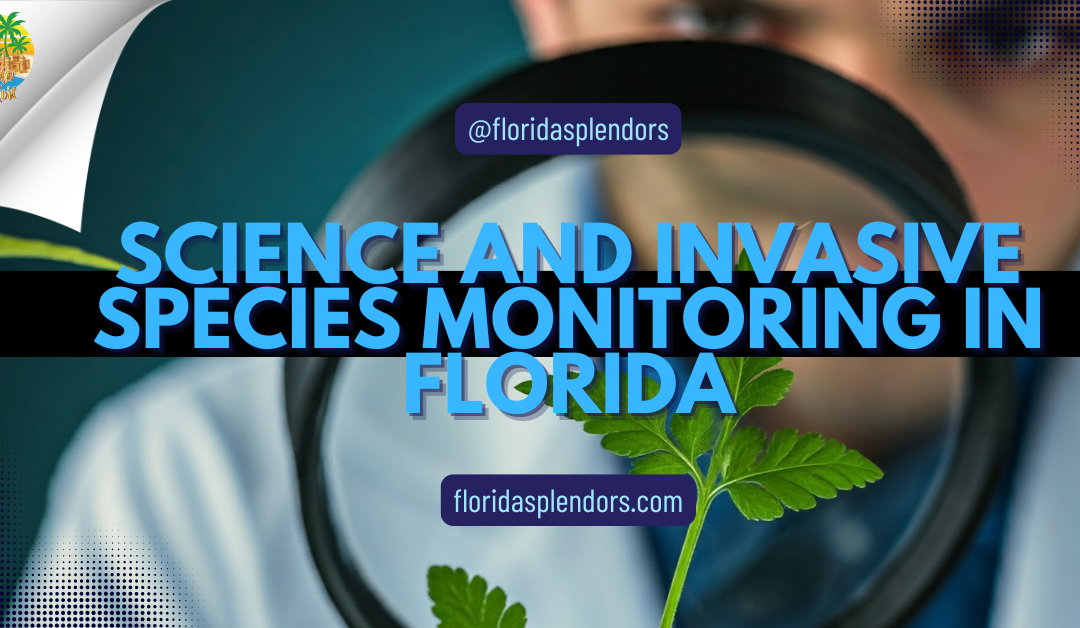==================
Florida Splendors is supported by our audience. When you purchase through one of our links, we may earn a small affiliate commission. As an Amazon Associate I earn from qualifying purchases. Your cost is not affected.
Science and invasive species monitoring in Florida have become critical in addressing the growing threat to the state’s diverse ecosystems. These non-native plants and animals disrupt local habitats, outcompete native species, and can cause irreversible environmental damage. From the wetlands to coastal regions, the impact of these invaders is widespread and alarming. They endanger wildlife and affect Florida’s economy, particularly industries like agriculture and tourism. Without proper intervention, Florida’s unique biodiversity could face severe challenges in the future.
Fortunately, science is at the forefront of monitoring and controlling these invasive species. Researchers use advanced tools and methods to track their spread, assess their impact, and develop strategies for managing them. Innovative technologies such as satellite tracking and DNA analysis are now essential in identifying and controlling these species. In this article, we’ll dive into the creative approaches used across the state, highlighting how technology, research, and community efforts play vital roles in protecting Florida’s ecosystems.
Citizen Science and Invasive Species Monitoring in Florida: Join the Sunshine State’s Battle Against Unwanted Guests
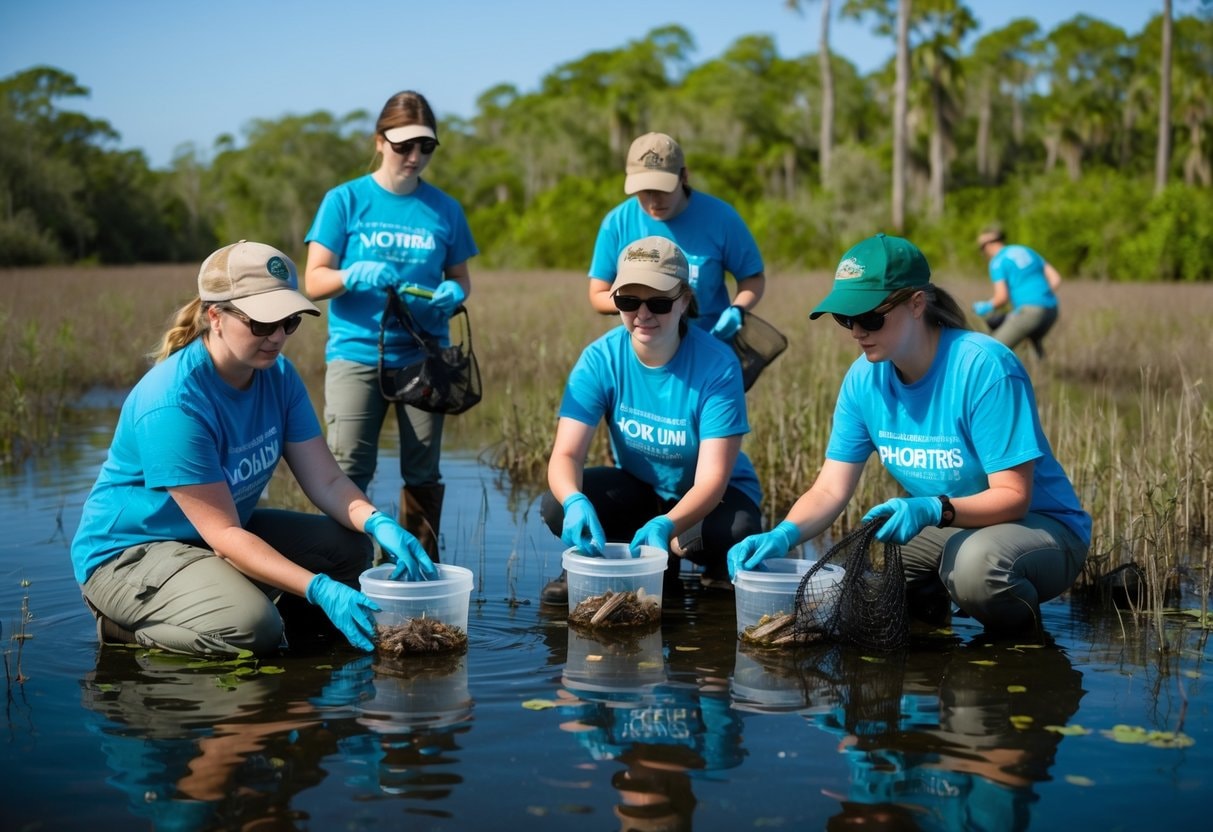
Florida’s unique ecosystems face a growing threat from invasive species. Everyday, people can help protect the state’s biodiversity through citizen science projects. These efforts, which contribute to science and invasive species monitoring in Florida, let regular folks team up with experts to track and manage non-native plants and animals.
Citizen science projects make a real difference for wildlife in Florida. People gather reliable data that helps scientists and land managers when they join in. For example, the Florida Horseshoe Crab Watch shows that volunteers’ information is just as good as what researchers get.
Anyone can get involved in monitoring invasive species. Smartphone apps help target where citizen scientists should look. This searches for problem plants and animals more efficiently. Even fun activities like fishing can aid the cause. People can help round up invasive fish species in Florida’s southwest waters.
Key Takeaways
- Science and technology are essential for monitoring and controlling invasive species, helping to protect Florida’s diverse ecosystems.
- Everyday, citizens can actively participate in invasive species monitoring through citizen science projects, collecting valuable data, and reporting sightings.
- Invasive species threaten Florida’s unique biodiversity, disrupting ecosystems and affecting local wildlife and natural resources.
- Partnerships between universities, government agencies, and local communities enhance the effectiveness of invasive species management and education.
- Implementing sustainable practices and policies, such as promoting native plants and regulating non-native species, is crucial for mitigating the impact of invasives in Florida.
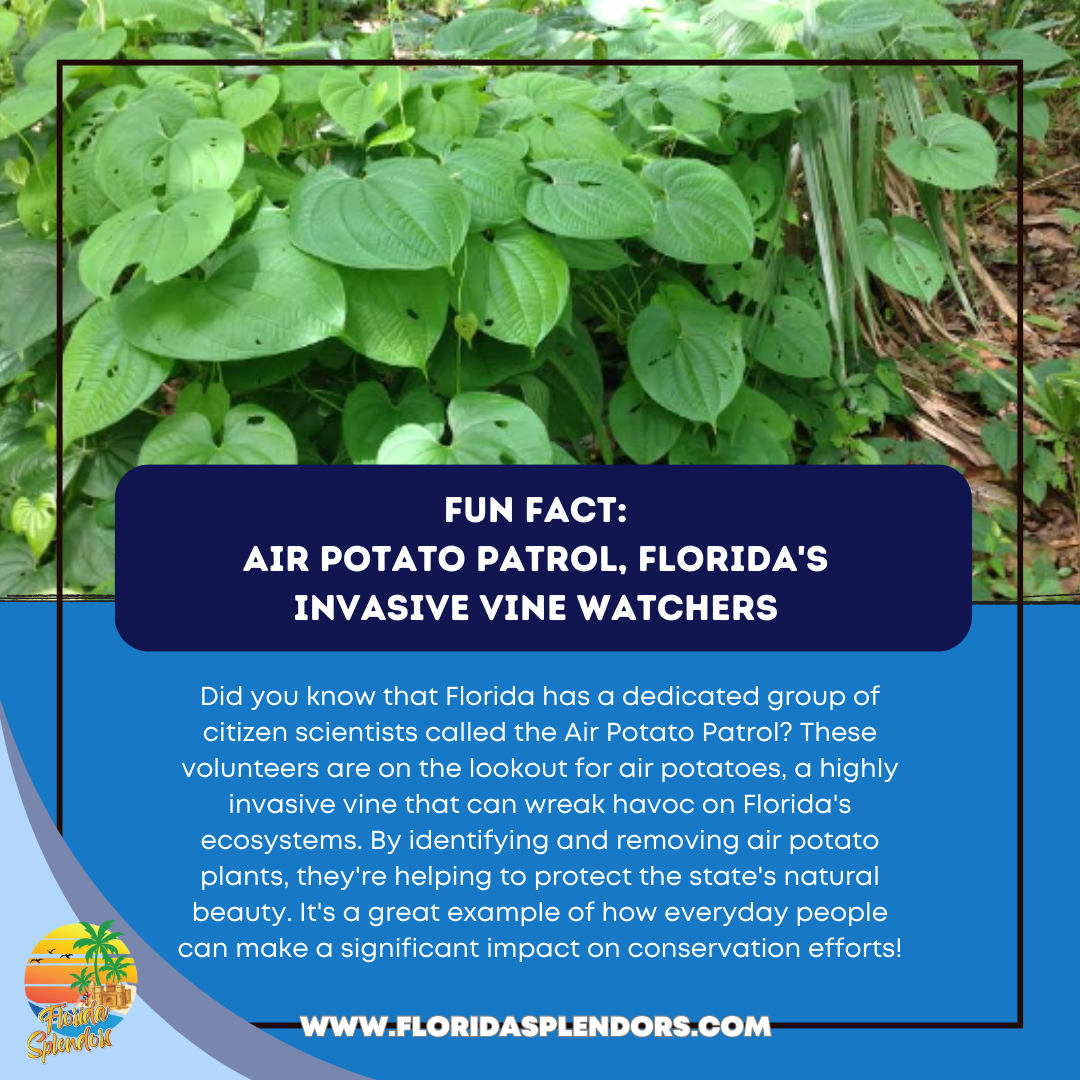
The Importance of Biodiversity in Florida
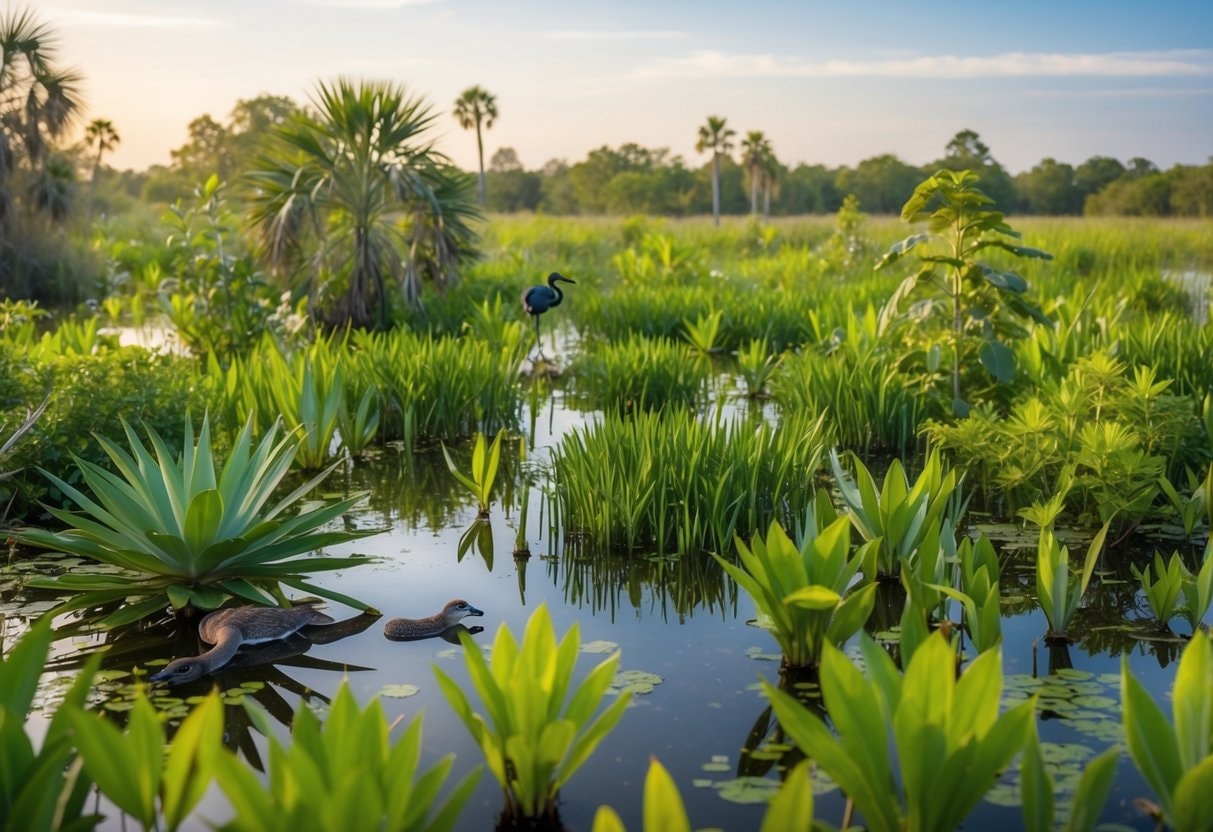
Florida’s rich biodiversity plays a crucial role in maintaining healthy ecosystems. Native plants and animals work together to create a balanced environment. But this delicate balance faces threats from invasive species, making science and invasive species monitoring in Florida essential to protect these ecosystems.
Balance of Native Ecosystems
Florida’s native plants and animals form a complex web of life. Each species has a unique role in the ecosystem. Native plants provide food and shelter for local wildlife. They also help prevent soil erosion and filter water.
Native animals pollinate plants and spread seeds. This helps new plants grow. Some animals keep pest populations in check. Others break down dead matter, recycling nutrients back into the soil.
Healthy ecosystems offer many benefits to people, too. They clean our air and water. They provide places for recreation and enjoyment. Native plants can even help protect our homes from storms and flooding.
Threat of Invasive Species
Invasive species pose a big risk to Florida’s biodiversity. These are plants or animals that don’t naturally live here. They can spread quickly and cause problems for native species. Invasive plants may:
- Crowd out native plants
- Use up water and nutrients.
- Change the landscape
Invasive animals can:
- Eat native species
- Compete for food and homes.
- Bring new diseases
Some common invasive species in Florida include:
- Brazilian pepper trees
- Burmese pythons
- Lionfish
Stopping invasive species is hard work. It takes time and money. But it’s essential to protect Florida’s unique plants and animals.
Check out this video on the biodiversity of Florida’s coasts.
By: Wildlife Chronicles
Overview of Invasive Species in Florida
Florida faces many challenges from non-native plants and animals. These invaders harm local ecosystems and cost the state a lot of money. Through science and invasive species monitoring in Florida, experts can identify and manage these threats more effectively.
Let’s look at what makes a species invasive, some common examples in Florida, and how they affect the state’s natural resources.
Defining Invasive Species
Invasive species are plants, animals, or other organisms not native to an area. They cause harm to the environment, economy, or human health. In Florida, invasive species often thrive due to the warm climate and lack of natural predators.
These unwanted guests can arrive in many ways. Some hitchhike on ships or planes. Others escape from gardens or pet owners. Once they settle in, invasive species tend to spread quickly. Not all non-native species become invasive. To be labeled invasive, they must cause problems for native plants and animals or human activities.
Common Invasive Species in Florida
Florida has many invasive plants and animals. Some well-known examples include:
- Burmese pythons in the Everglades
- Brazilian pepper trees along coastlines
- Lionfish in coral reefs
- Water hyacinth clogging waterways
These invaders often outcompete native species for food and space. They can change entire ecosystems if left unchecked. New threats are always on the horizon. Scientists recently identified 40 species that could soon become big problems in Florida.
Impact on Natural Resources
Invasive species take a heavy toll on Florida’s natural resources. They harm native plants and animals in several ways:
- Eating native species
- Taking over habitats
- Spreading diseases
These impacts ripple through ecosystems. For example, when invasive plants crowd out natives, animals that depend on those plants suffer, too. The economic costs are enormous. Florida spends millions each year to control invasive species.
They damage crops, clog waterways, and harm tourism. Invasive species also threaten human health. Some carry diseases or cause allergies. Others, like fire ants, can hurt people directly.
Importance of Monitoring Invasive Species
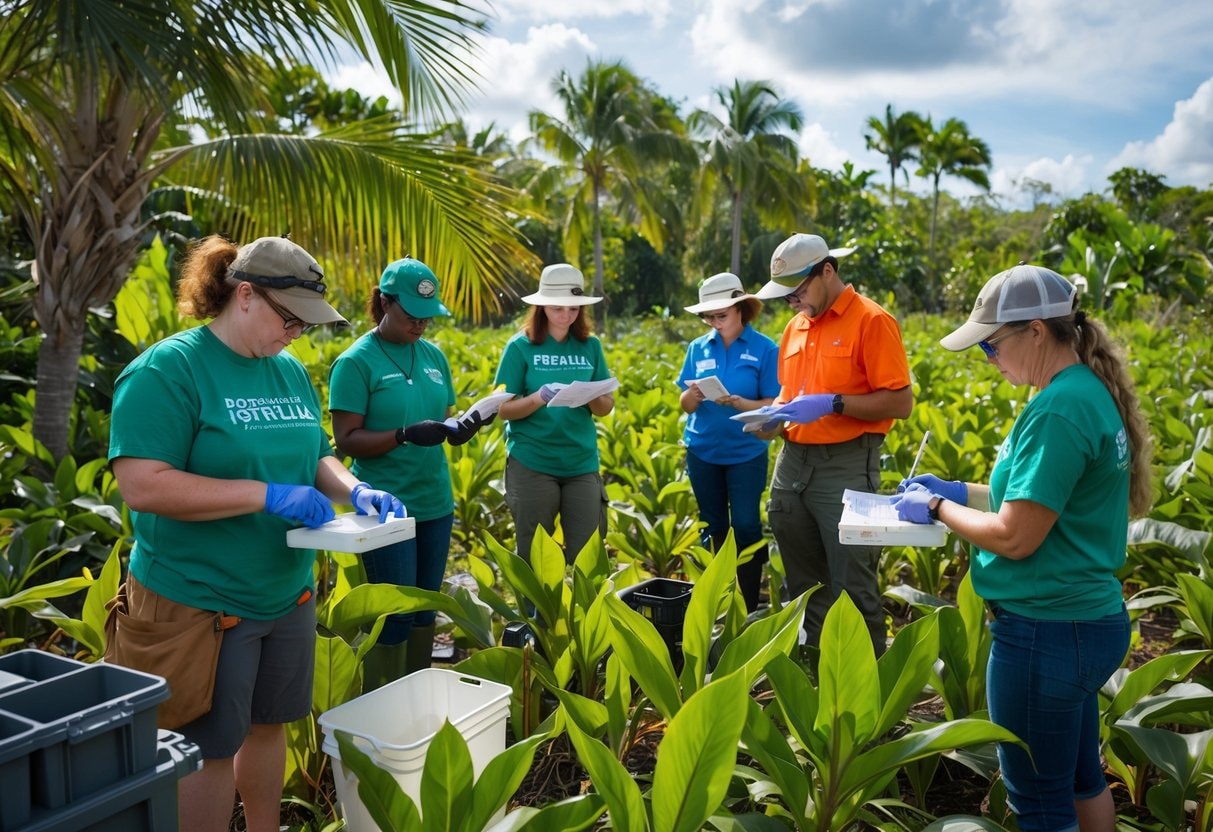
Keeping track of invasive species is key for protecting Florida’s environment, mainly through science and invasive species monitoring in Florida. It helps catch new invaders early and keeps ecosystems healthy over time.
Early Detection and Rapid Response
Spotting invasive species quickly is crucial. The sooner we find them, the easier and cheaper it is to control them. Citizen science programs help a lot with this. They get many people looking for new invaders.
Trained volunteers can cover more ground than scientists alone. They act as extra eyes and ears in the field. This helps catch problems before they get big. Quick action after finding an invader is vital. It can stop the species from spreading. Sometimes, it can even wipe out the invader completely if caught early enough.
Long-Term Environmental Health
Regular monitoring helps protect ecosystems over time. It shows how invasive species change the environment. This info guides management choices. Tracking invasive species helps find “hot spots” where they cause the most harm.
Managers can then focus their efforts on these areas. It also shows which control methods work best. Long-term data reveals trends in invasive species spread. This helps predict future problems. It allows for better planning and use of resources to protect native plants and animals.
Role of Citizen Science in Monitoring
Citizen science plays a big role in science and invasive species monitoring in Florida, helping scientists gather lots of data over large areas. Regular people can spot new invasive plants and animals that experts might miss.
What Is Citizen Science?
Citizen science lets regular people help with real research. They collect data and share it with scientists. For invasive species, citizens might take photos of plants or animals they see. They can use apps to report sightings.
Citizen scientists don’t need special training. They just need to be curious and willing to help. Kids, adults, and seniors can all take part. It’s a fun way to learn about nature and help protect it.
Benefits of Citizen Involvement
Citizen science has many good points for invasive species work. It covers more ground than scientists alone can. More eye-watching means catching problems early. This helps stop invasive species from spreading.
People learn a lot by taking part. They become experts on local plants and animals. This makes them care more about protecting nature. They might tell others what they learn, too. Citizen science saves money. Getting data would cost a lot if only paid staff did it. With volunteers, scientists can do more with less cash.
Successful Citizen Science Projects
Florida has some great citizen science projects for invasive species. One is called the Air Potato Patrol. It watches for an invasive vine. People learn how to spot and report it. They also help remove the vines.
Another project uses smartphone apps. People can quickly report invasive plants or animals they see. The app sends the info right to scientists. This helps track where invasives are spreading.
Some groups hold “bioblitz” events. These are like nature scavenger hunts. People try to find and report as many species as they can in one day. It’s fun and helps spot new invasive species.
Collaborative Efforts and Programs
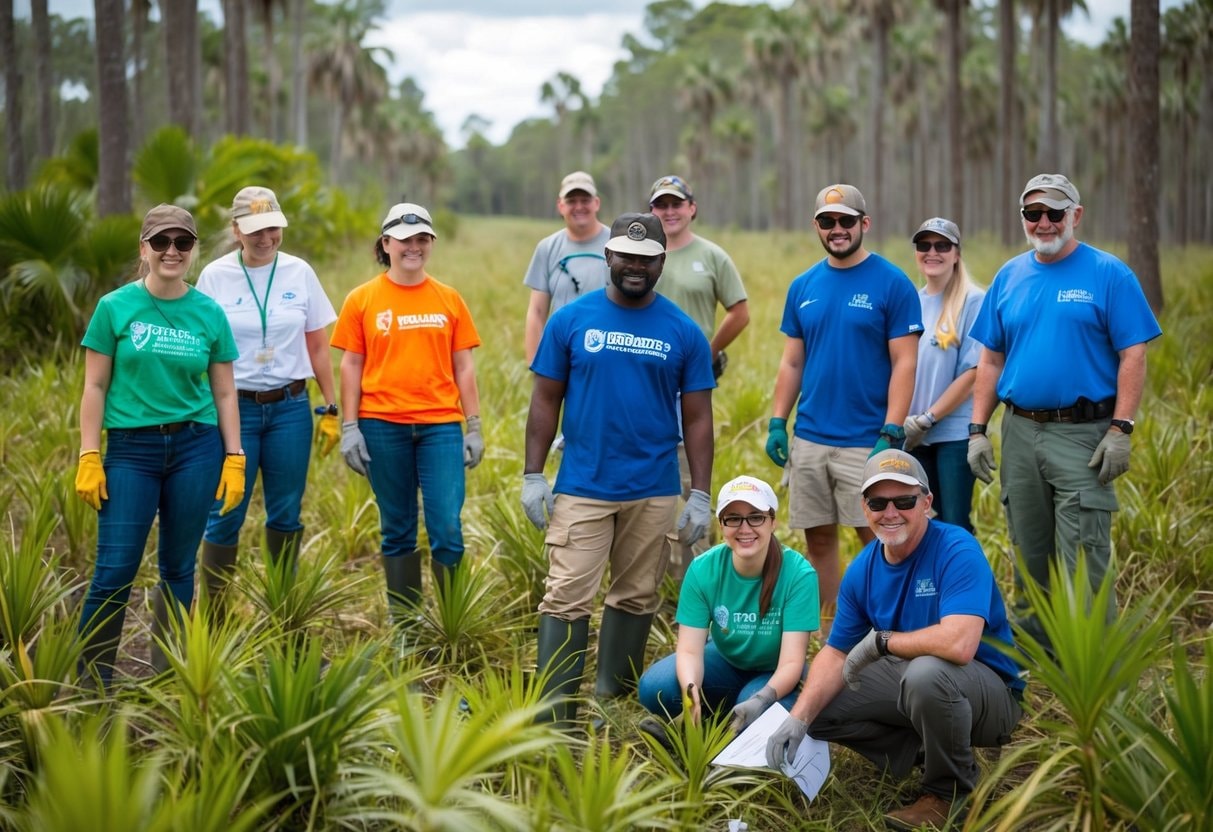
Florida’s fight against invasive species thrives on teamwork, particularly through science and invasive species monitoring in Florida. Many groups join forces to track and manage these unwanted plants and animals. Let’s look at some key partnerships and projects.
University of Florida Initiatives
The University of Florida leads many citizen science programs focused on invasive species. They train volunteers to spot and report problem plants and animals. One popular project is the Air Potato Patrol. It asks people to watch air potato vines on their land.
UF also runs online databases. These help track where invasive species pop up. Anyone can add info to these systems. This helps scientists see the big picture of invasive spread. Students and staff often host “bioblitzes” too. These are fun events where people find and count as many species as they can in a short time.
Partnerships with UF/IFAS
UF’s Institute of Food and Agricultural Sciences (IFAS) works closely with many groups. They team up with parks, nature centers, and schools. Together, they teach people about invasive species.
IFAS runs workshops for land managers. These show the best ways to control problems with plants and animals. They also work with farmers to protect crops from invasive pests. Their Extension offices in each county are key. They give local help and advice. People can bring in strange plants or bugs to be identified.
Community-Led Projects
Many towns and cities in Florida have their own invasive species programs. These often focus on local problem plants or animals. Volunteer groups might pull out invasive plants in parks or along beaches.
Some areas have “weed wrangler” days. Folks get together to remove harmful plants and put in native ones. It’s a fun way to help and learn. Fishing clubs sometimes host invasive fish removal contests. These can help control species like lionfish. Hunters may also be asked to target invasive animals like wild hogs.
Getting Involved with Citizen Science
Floridians can play a significant role in protecting nature through science and invasive species monitoring in Florida. Anyone can join fun projects to watch wildlife and help scientists. There are many ways to learn and make a difference.
How to Participate in Bioblitzes
A bioblitz is a fun event where people count as many species as they can in one place. It’s like a nature scavenger hunt. You can join a bioblitz near you or start your own. To take part:
- Look for local bioblitz events online
- Bring a camera or smartphone.
- Take photos of plants and animals you see
- Use apps like iNaturalist to identify species.
Bioblitzes help scientists learn what lives in an area. They’re great for families and nature lovers. You might even spot rare species!
Contributing to Florida’s Natural Areas
Florida has many beautiful parks and forests to explore. You can help care for these places as a citizen scientist. Here are some ways to pitch in:
- Count birds or butterflies
- Check on sea turtle nests
- Look for invasive plants.
- Track changes in tree growth
These tasks are easy to learn. They give scientists important data about Florida’s ecosystems. You’ll also get to spend time outdoors and meet other nature fans.
Training and Education for Citizens
You don’t need to be a pro to help with science. Many groups offer free training for citizen scientists. You can learn how to:
- Identify local plants and animals
- Use science tools and apps.
- Record data correctly
- Stay safe while exploring nature.
Florida Horseshoe Crab Watch is one program that trains volunteers. They teach people to count crabs on beaches. This helps track crab numbers over time. Look for workshops at parks, museums, or schools near you. You’ll gain new skills and be ready to join exciting projects.
Did You Know?
The IveGot1 app allows users to report invasive species sightings in Florida. EDDMapS is another popular tool for tracking invasive plants and animals. The Florida Invasive Species Partnership website offers resources for reporting and provides links to several reporting systems.
Check out this video to learn about Bioblitzes.
By: Conservation Florida
Developing Effective Management Strategies

Managing invasive species in Florida requires careful planning and action, particularly when considering the role of science and invasive species monitoring in Florida. Effective strategies combine sustainable practices, smart policies, and future-focused approaches.
Creating Sustainable Practices
Citizen science projects play a significant role in sustainable invasive species management. These programs help educate Florida residents about harmful plants and animals. They also gather valuable data. One example is the Air Potato Patrol. This program teaches people about an invasive vine. It shows them how to spot and report it.
Sustainable practices also focus on protecting native plants. By planting local species, we can make it harder for invaders to take over. Native plants need less water and care, making them a smart choice.
Policy and Regulation
Good rules help stop invasive species from spreading. Florida has laws about bringing in non-native plants and animals. These laws aim to protect the state’s unique ecosystems. Some policies encourage the use of native plants in landscaping.
Others focus on controlling known invasive species. For example, there are rules about getting rid of air potato vines. Experts work with lawmakers to create these policies. They use the latest research to make intelligent choices. This helps balance human needs with environmental protection.
Future of Invasive Species Management
New tech is changing how we fight invasive species. Drones and satellites can spot problem areas from above. This helps target efforts where they’re needed most. Improved monitoring methods are on the horizon. These will use things like DNA testing to find invaders early. Catching problems fast makes them easier to solve.
The future also includes more teamwork. Scientists, volunteers, and government groups will work together more. This joined-up approach will make managing invasive species more effective.
Protecting Florida’s Ecosystems: The Role of Science and Community in Invasive Species Monitoring
The integration of science and invasive species monitoring in Florida is essential for safeguarding the state’s unique ecosystems. As non-native plants and animals threaten Florida’s biodiversity, the combination of advanced scientific research and active citizen participation becomes increasingly vital. The ecological balance maintained by native species is constantly threatened by these invaders, which can lead to dire consequences for the environment and the economy. Through the ongoing efforts of scientists, volunteers, and local communities, there is hope for managing these invasive species and preserving Florida’s rich natural heritage.
Moreover, the collaborative approach of citizen science initiatives enhances the effectiveness of science and invasive species monitoring in Florida. By engaging the public in tracking and reporting invasive species, valuable data is collected that can inform management strategies and help mitigate the impacts of these harmful invaders. With the advancement of technology and community involvement, Florida is taking significant strides toward ensuring a healthier environment for future generations. Together, these efforts can help protect the state’s unique ecosystems and foster a greater appreciation for Florida’s diverse wildlife.
Frequently Asked Questions
What's Inside
- How Can I Get Involved in Citizen Science Projects to Monitor Invasive Species in Florida?
- What Should I Do if Encounter an Invasive Animal or Plant in My Local Area?
- What Are the Most Common Invasive Species to Look Out for in Florida's Ecosystems?
- Are There Any Educational Programs Available to Learn More About the Impact of Invasive Species in Florida?
- How Does Reporting Invasive Species Sightings Contribute to Conservation Efforts in Florida?
How Can I Get Involved in Citizen Science Projects to Monitor Invasive Species in Florida?
Floridians can join citizen science projects to help track invasive species. Local groups often need volunteers for surveys and data collection. Many universities and nature centers host training sessions. These teach people how to identify and report invasive plants and animals.
What Should I Do if Encounter an Invasive Animal or Plant in My Local Area?
Take photos of the species and note the exact location. Don’t try to remove or capture it yourself. Report the sighting to local wildlife officials or use an invasive species reporting app. They can confirm the ID and take proper action.
What Are the Most Common Invasive Species to Look Out for in Florida's Ecosystems?
Some common invasive plants in Florida include Brazilian pepper and water hyacinth. For animals, people should watch for Burmese pythons and lionfish. Invasive fire ants and Cuban tree frogs are also widespread. Florida’s environment faces threats from many non-native species.
Are There Any Educational Programs Available to Learn More About the Impact of Invasive Species in Florida?
The University of Florida offers online courses about invasive species. These cover identification, impacts, and management. Many state parks host guided walks and talks about local ecosystems and invasive species. Nature centers often exhibit this topic.
How Does Reporting Invasive Species Sightings Contribute to Conservation Efforts in Florida?
Reporting helps create maps of where invasive species are spreading. This guides removal efforts and protects vulnerable areas. Early detection from citizen reports can stop new invasions before they grow. It also helps track the success of control programs over time.
Discover the Beauty of Florida: Kayaking, Manatees, and Beyond!
Are you prepared to experience the marvels of Florida in a whole new way? Become a part of Florida Splendors, your gateway to an online community that loves kayaking, manatees, and the stunning landscapes of the Sunshine State.
Connect with us on:

